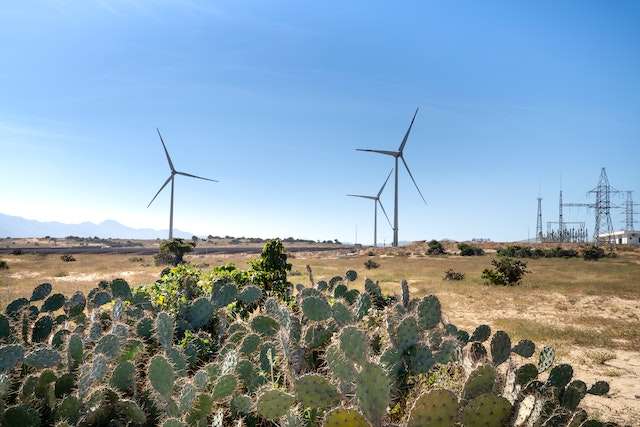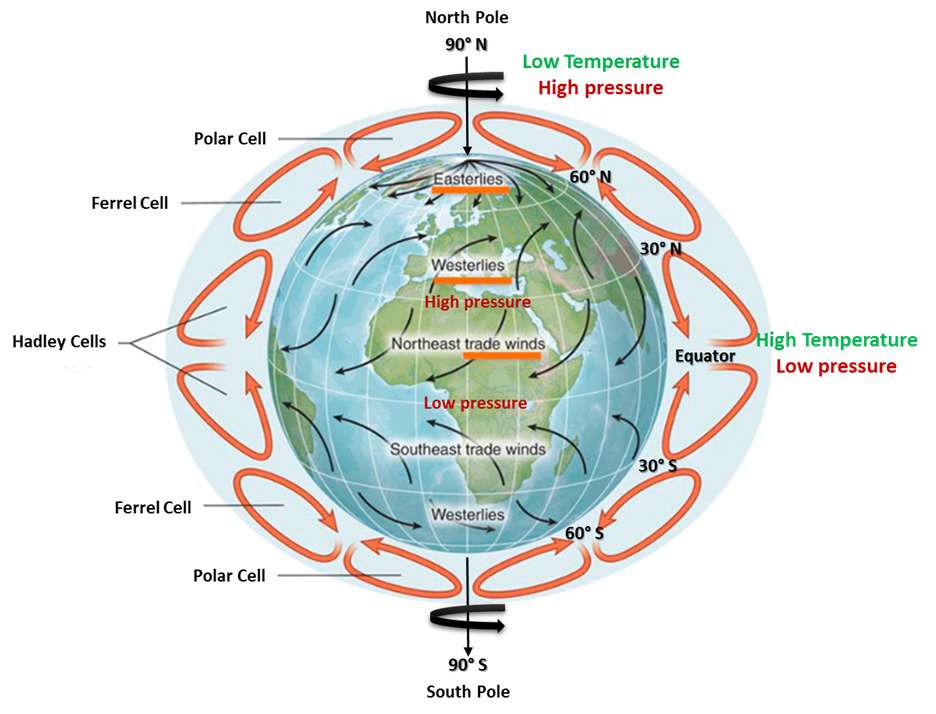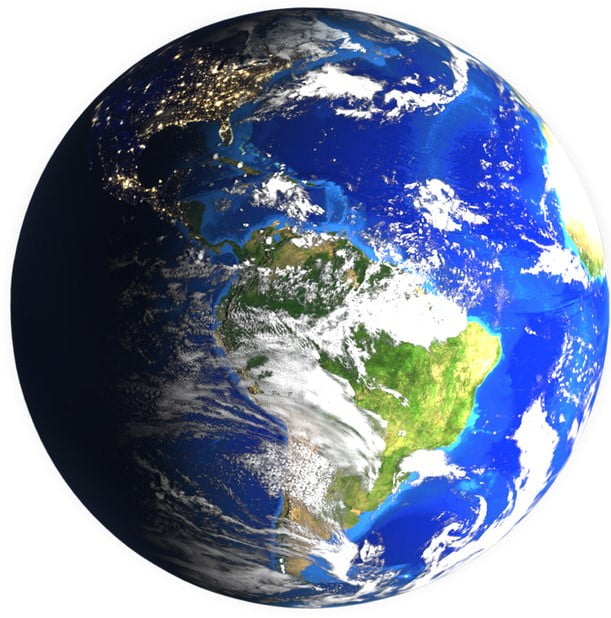
We often search for good air for healthy breathing and a cool breeze to enjoy our lives. However, we don’t find similar wind everywhere on our planet Earth. The wind is different in every place, the top 5 scientific reasons are as follows.
1. Coriolis Effect
The intensity of solar energy is higher at the equator warms the atmosphere and forms a low-pressure area. Due to pressure difference air rises at the equator and moves toward the pole at the top of the troposphere. While moving, it appears to deflect to the right because of the Coriolis Effect. As per the Coriolis Effect motions in a rotating frame will appear deflected to the right in the northern hemisphere and left in the southern hemisphere. The magnitude of the deflection varies with latitude. Minimum deflection on the equator and the utmost deflection at the poles. Due to this effect, any low-pressure area in the Northern and Southern Hemisphere rotates counter-clockwise and clockwise (Inward). The circular rotation of wind is known as the Cyclonic condition. However, the high-pressure area in the Northern and Southern Hemispheres rotates clockwise and counter-clockwise (outward), respectively. That forms an Anti-cyclonic condition.

At ~30°N latitude, the air from the equator meets air flowing toward the equator from the higher latitudes. This air is cool because it has come from higher latitudes. Both batches of air descend, creating a high-pressure zone. Once on the ground, the air returns to the equator. These convection cells are called the Hadley Cells and are found between 0-30°N and 0-30°S. Similarly, Polar Cells are formed between 60-90°N and 60-90°S. However, between 30-60°N and 30-60°S latitude, wind direction is inverse due to the mechanical energy of Hadley and Polar Cells named Ferrel Cells.
2. Different monsoon
Monsoons, sea breezes and frictional forces are crucial in atmospheric circulation patterns. Temperature is different at each location on the planet due to multiple factors. The pressure and temperature of the atmosphere have an inverse correlation with each other. The different monsoons are due to the difference in pressure and temperature. The pressure difference created by the atmospheric circulation cells also determines the precipitation. In low-pressure regions, where the air is rising, rain is common. In high-pressure areas, the sinking air causes evaporation and the region is usually dry.
3. Uneven Earth Surfaces
The sunlight intensity received is not the same everywhere due to the uneven Earth’s surface. The angle at which sunlight falls on the surface determines the temperature and climatic conditions. All the surfaces have a different albedo (amount of reflected sunlight by total light received by the surface). Due to the difference in albedo, each place on our planet absorbs different light and counter radiates differently making the uneven circulation of wind.

4. Uneven distribution of vegetation
The vegetation cover of an area regulates climate and metrological functions. High vegetation cover has a lower temperature than lesser vegetation in comparable places. The forest cover of an area is directly linked with the rainfall pattern of that area and nearby areas. Therefore, different tree covers can change wind velocity and direction.
5. Urban Heat Island
Urban areas have higher albedo and temperature due to construction and lesser vegetation. The wind from the urban areas will have high temperatures and lower pressure. A different wind pattern could be due to pressure differences. This is also one of the reasons why the wind is different in every place.
In addition to the above factors, many other environmental factors including tides, volcanic eruptions, earthquakes, mountains, and rivers regulate wind velocity and direction.

